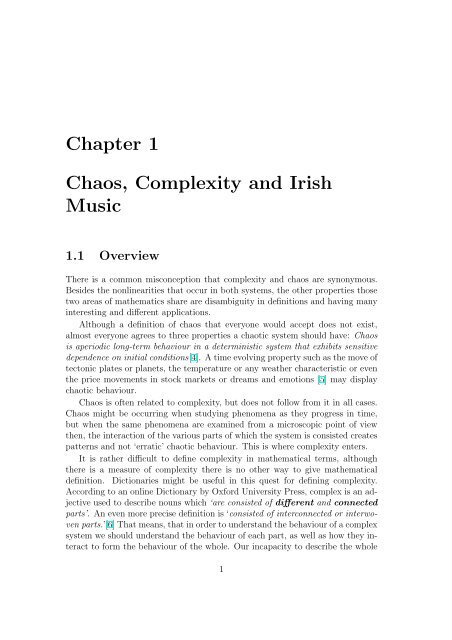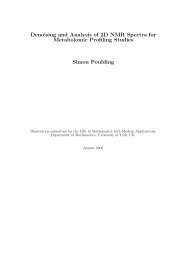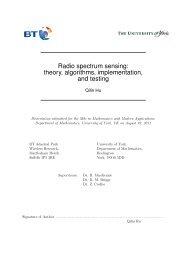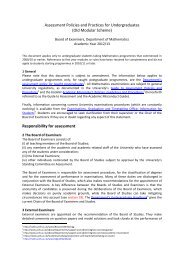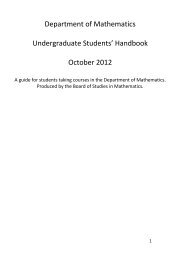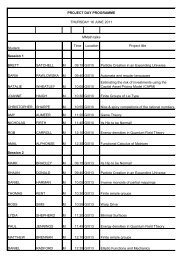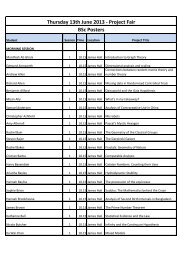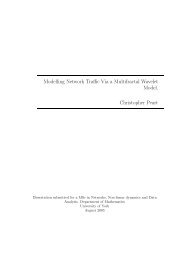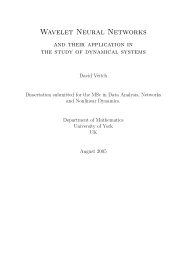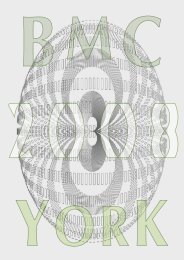The El Farol Bar Problem for next generation systems
The El Farol Bar Problem for next generation systems
The El Farol Bar Problem for next generation systems
You also want an ePaper? Increase the reach of your titles
YUMPU automatically turns print PDFs into web optimized ePapers that Google loves.
Chapter 1<br />
Chaos, Complexity and Irish<br />
Music<br />
1.1 Overview<br />
<strong>The</strong>re is a common misconception that complexity and chaos are synonymous.<br />
Besides the nonlinearities that occur in both <strong>systems</strong>, the other properties those<br />
two areas of mathematics share are disambiguity in definitions and having many<br />
interesting and different applications.<br />
Although a definition of chaos that everyone would accept does not exist,<br />
almost everyone agrees to three properties a chaotic system should have: Chaos<br />
is aperiodic long-term behaviour in a deterministic system that exhibits sensitive<br />
dependence on initial conditions[4]. A time evolving property such as the move of<br />
tectonic plates or planets, the temperature or any weather characteristic or even<br />
the price movements in stock markets or dreams and emotions [5] may display<br />
chaotic behaviour.<br />
Chaos is often related to complexity, but does not follow from it in all cases.<br />
Chaos might be occurring when studying phenomena as they progress in time,<br />
but when the same phenomena are examined from a microscopic point of view<br />
then, the interaction of the various parts of which the system is consisted creates<br />
patterns and not ‘erratic’ chaotic behaviour. This is where complexity enters.<br />
It is rather difficult to define complexity in mathematical terms, although<br />
there is a measure of complexity there is no other way to give mathematical<br />
definition. Dictionaries might be useful in this quest <strong>for</strong> defining complexity.<br />
According to an online Dictionary by Ox<strong>for</strong>d University Press, complex is an adjective<br />
used to describe nouns which ‘are consisted of different and connected<br />
parts’. An even more precise definition is ‘consisted of interconnected or interwoven<br />
parts.’[6] That means, that in order to understand the behaviour of a complex<br />
system we should understand the behaviour of each part, as well as how they interact<br />
to <strong>for</strong>m the behaviour of the whole. Our incapacity to describe the whole<br />
1


